• Healthy hydration ideas


• Summer hair & skin care tips

• Foods to beat brain fog
with a twist

• Healthy hydration ideas


• Summer hair & skin care tips

• Foods to beat brain fog
with a twist
A fat-soluble nutrient found in many foods, vitamin E is also added to some cereals, fruit juices, margarines, and other products.
Stored in fatty tissue, E acts as an antioxidant and a multitasking nutrient, helping to prevent and fight infections by stimulating the immune system. The natural form, d-alpha-tocopherol, is more potent than the synthetic dl-alpha-tocopherol.

Vitamin E deficiency is rare in healthy people and is usually linked to particular diseases that involve improper digestion or absorption of fats, such as Crohn’s disease and cystic fibrosis. Vitamin E’s antioxidant functions and its roles in anti-inflammatory processes, inhibition of platelet aggregation, and immune enhancement suggest that there are cardiovascular and anticancer benefits.
Research on E and Alzheimer’s disease is ongoing, with some studies demonstrating that this vitamin may slow the functional decline of patients with mild to moderate forms of this disease. Since vitamin E can increase the risk of bleeding in those who take medicines such as warfarin, it should not be taken without their doctor’s permission. ●
20 healthy family Kombucha is the ultimate functional beverage.
22 fight pain & inflammation

Natural ways to ease aching joints.
25 summer hair & skin savers Get a healthy glow!


26 cook-at-home
Learn to make tasty rubs and marinades.
28 healthy strategies
Keep creeping weight gain in check.
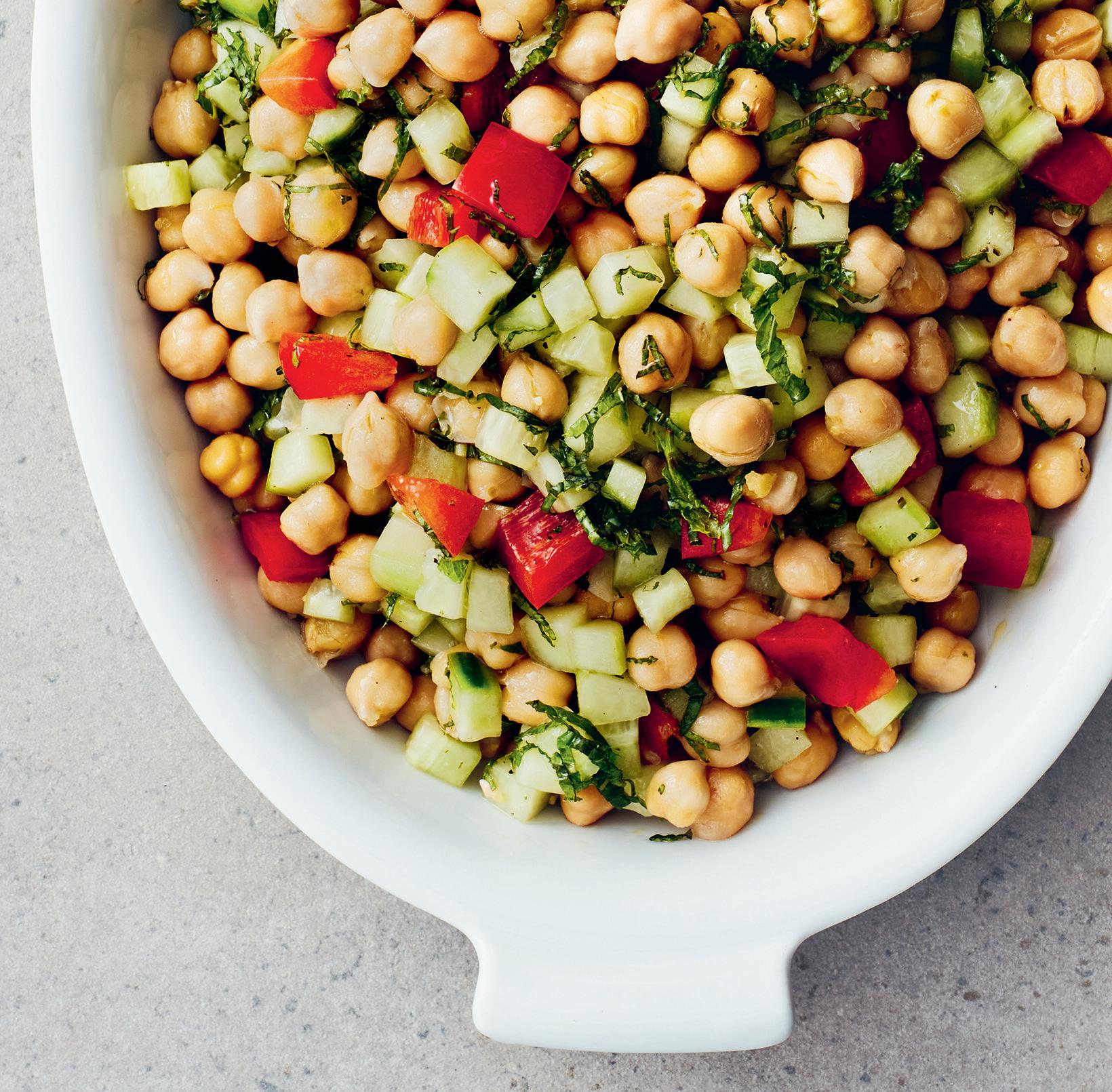
The month of beach days and fireworks displays is finally here, time to celebrate sunshine, outdoor activities, and fresh fruits and vegetables. (That first bite of a ripe summer tomato or peach? Yum.)
When you’re outside, even if you’re swimming or enjoying other water activities, don’t forget the water you need to drink. Dehydration can be a serious problem, but we have suggestions to make sure it doesn’t affect you (page 16). Your whole body will benefit from staying hydrated—including your skin and hair. Nourishing and protecting them are important in the summer. See page 25 for tips including using sunscreen (on your scalp, too!), eating well, and turning to natural remedies for sunburn, bruises, and bug bites.
If pain and inflammation interfere with your active summer fun, this month’s health feature offers nutritional support (page 22). Excess weight can also slow you down, so turn to page 28 for help with combating this common health problem.
Think red in the summer! From lycopene-rich tomatoes to cherries bursting with vitamin C, the antioxidants in red vegetables and fruit give your body a boost. And the more we learn about beets (page 9), the more we love this nitrate-rich veggie.
For summer beverages, check out kombucha (page 20) and our refreshing lemonade made with watermelon and lavender (page 5). Brain fog seems to affect a lot of us these days. Beginning on page 12, we have ideas for lifting the fog with the help of food.
Did someone say barbecue? A favorite summertime meal option, cooking on the grill doesn’t heat up the kitchen and adds bold flavors to meals. Kick your grilling up a notch with easy-to-prepare rubs and marinades (page 25).
Enjoy all the healthy activities your summer can hold!

Contributing Writers
Mary Ann O’Dell MS, RDN
Sally Karlovitz CN
Chief Content Officer and Strategist
Lynn Tryba (Lynn.Tryba@TasteforLife.com)
Contributing Editors
Lisa Fabian, Rich Wallace
Associate Editor
Kelli Ann Wilson
Art Director
Michelle Knapp
Custom Graphics Manager
Donna Sweeney
Chief Marketing and Business Development Officer
Amy Pierce
Customer Service 800-677-8847
CustomerService@TasteforLife.com
Client Services Director - Retail Judy Gagne (x128)


Client Services Director - Advertising & Digital Ashley Dunk (x190)
Vice President – Retail Sales and Strategic Partnerships
Anna Johnston (Anna.Johnston@TasteforLife.com)
Founder and Chief Executive Officer
T. James Connell
Taste for Life® (ISSN 1521-2904) is published monthly by CCI, 155 Washington Street, Keene NH 03431, 603-283-0034 (fax 603-283-0141); © 2023 Connell Communications, Inc. All rights reserved. Subscription rates: $29.95. This magazine is not intended to provide medical advice on personal health conditions, nor to replace recommendations made by health professionals. The opinions expressed by contributors and sources quoted in articles are not necessarily those of the editor or the publisher. Advertisers and advertising agencies assume liability for all content of advertising and for any claims arising therefrom. Information appearing in Taste for Life may not be reproduced in whole or in part without express permission of the publisher.

Creative and Sales Offices
Mary Ann O’Dell, MS, RDNa note on recipes
Nutritional analysis from Edamam. Nutritional values vary depending on portion size, freshness of ingredients, storage, and cooking techniques. They should be used only as a guide. Star ratings are based on standard values (SVs) that are currently recommended:
★★★★★ Extraordinary (50 percent or better), ★★★★ Top source,
★★★ Excellent source, ★★ Good source, ★ Fair source

155 Washington Street, Keene NH 03431 603-283-0034 Disclaimer
*These statements have not been evaluated by the FDA. These products are not intended to diagnose, treat, cure, or prevent any disease.

20 min prep time + cool time for lavender simple syrup
serves 8
From Everyday Celebrations from Scratch by Maria Provenzano ($29.99, Harper Horizon, 2022)
1 c sugar
1 c water
2 Tbsp dried culinary lavender
1 c freshly squeezed lemon juice (approximately 5 to 6 large lemons depending on size)
4 c cold water
4 c cubed seedless watermelon
Lavender sprigs for garnish, optional
Lemon slices for garnish, optional
1. Place sugar and water into a pan. Stir together over medium heat until sugar dissolves. Whisk lavender into pan.
2. Once mixture starts to lightly boil, turn heat down to a simmer. Simmer mixture for about 10 minutes. Simmer for less time for a lighter lavender flavor. Allow lavender simple syrup to cool completely.
3. In a blender, combine lemon juice, cold water, and cubed watermelon. Blend until smooth.
4. Add as much lavender simple syrup as desired to mixture. Start with half the amount of syrup, and then add more if needed. To make the lemonade more lemony, add more lemon juice. Blend to combine.
5. Store lemonade in fridge until ready to serve. Add ice to individual glasses. Garnish with lavender sprigs and lemon slices, if desired.
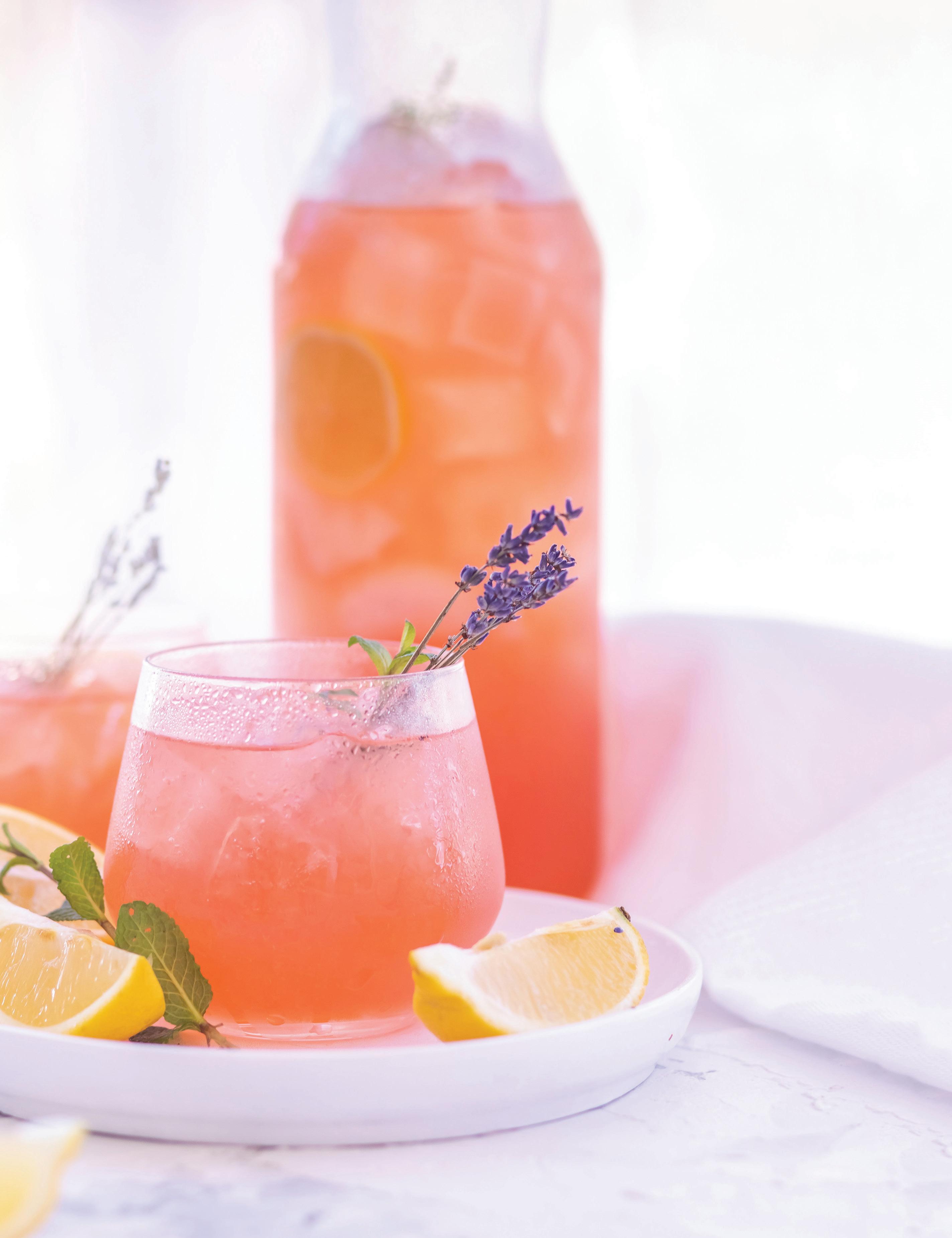
Kitchen Note: The amount of lavender simple syrup used will vary based on how sweet the watermelon is and how sweet you like the drink.
Per serving [using the ½ amount of lavender simple syrup]: 79 Calories, 1 g Protein, 0 mg Cholesterol, 20 g Carbohydrates, 18 g Total sugars (12 g Added sugars), 0 g Fiber, 0 g Total fat (0 g sat), 7 mg Sodium, ★★ Vitamin C
Dark chocolate has attracted the attention of researchers and consumers for its potential health benefits. A new study sought to further clarify the relationship between dark chocolate consumption and cognitive function.
The four-week control study randomly assigned participants to an intervention group—instructed to eat five pieces of dark chocolate daily for 28 days—and a control group that did not consume any chocolate, and then used questionnaires and cognitive tests to measure the outcome of the intervention.
The results of this study produced key findings regarding dark chocolate’s effect on mental and physical fatigue. While the study did not find a direct effect on the brain or cognitive function, participants in the dark chocolate group reported enhanced vitality and improved executive function, memory, and social functioning, as well as a reduction in both physical and mental fatigue.

The study authors concluded that “dark chocolate may help to reduce fatigue in individuals, leading to improvements in brain health and various cognitive functions as well as quality of life.”
Previous research has identified potential antioxidant and anti-inflammatory properties in chocolate, as well as its potential to improve cardiovascular health and mood.
SOURCE “Dark chocolate intake may reduce fatigue and mediate cognitive function and gray matter volume in healthy middleaged adults” by K. Nemoto et al., Behavioural Neurology, 2022
As we age, so do our brains. Some of us seem to stay sharper as the decades pass, and scientists have been working to identify what factors may cause better cognitive outcomes for some individuals compared to their peers.
A recent report in The Journal of Nutrition explored how three measures of aging impacted the minds of older adults: nutrient intake, cognitive function, and brain structure. To facilitate their research, the study authors analyzed the results of nutrient biomarker tests, cognitive function tests, and high-resolution MRI data from 111 healthy older adults.
“If we just look at nutrition as it relates to brain structures and we don’t study cognition, or if we look at nutrition as it relates to cognition and we don’t study the brain, then we’re actually missing really important pieces of information,” said Aron K. Barbey, PhD, a professor of psychology, neuroscience, and bioengineering at the University of Illinois at Urbana-Champaign.
Among its findings, the study showed that biomarkers indicating higher intake of both monounsaturated and polyunsaturated fatty acids were correlated with better scores on tests of memory and healthier structures in specific parts of the brain.

Monounsaturated and polyunsaturated fats are “healthy fats” found in plant foods like nuts, avocados, and some vegetable oils (canola, olive, peanut, safflower, sesame, and sunflower). These fats have been linked to healthier cholesterol levels and a lower risk of heart disease and stroke.
SELECTED SOURCES “Facts about monounsaturated fats,” MedlinePlus, https://MedlinePlus.gov, 6/22/22 • “Integrating nutrient biomarkers, cognitive function, and structural MRI data to build multivariate phenotypes of healthy aging” by T. Talukdar et al., Journal of Nutrition, 5/2023 • “Study links nutrients, brain structure, cognition in healthy aging,” University of Illinois at Urbana-Champaign, 4/25/23
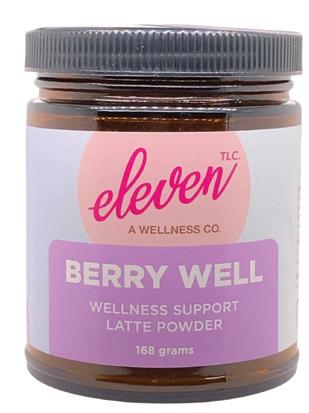
Get a burst of blueberry flavors with this beautiful and tasty drink, packed with adaptogens, superfoods, and herbs to give you the boost you need while supporting your taste buds and nervous system.* The blue color comes from nutrient rich blue spirulina and butterfly pea powder for stress and anxiety reduction.* Enhanced with maca for energy, plus prebiotic inulin fiber.
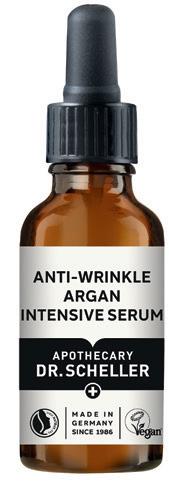
This effective, highly concentrated serum supplies skin with needed moisture and protects it against free radical damage. Ingredients work to smooth out fine lines and nourish the skin while increasing skin’s resilience and elasticity. This firming formula protects skin against premature aging.
Fuel your dog’s adventure with nature’s whole food ingredients. These soft and smoky jerky sticks are made with sweet potato, pumpkin, and flaxseed to support immunity, digestion, and smooth skin and coat. A portion of proceeds is donated to The Conservation Alliance to help protect North America’s wild places.

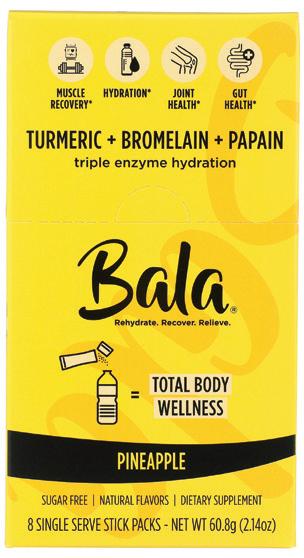
Add this mix to water to get the benefits of plant enzymes, electrolytes, and amino acids that enhance hydration, improve natural energy and endurance, and support recovery and gut health, all without added sugar.* The proprietary blend of turmeric, bromelain, and papain works to help regulate the body’s inflammatory response for better recovery.*
These are no ordinary cheese crackers! Cheddies boasts more cheese than any other “cracker” on the market. These crunchy baked crackers are made with regeneratively farmed, aged cheddar cheese from happy, healthy cows. They are high in protein, low in sugar, and perfect for any occasion!
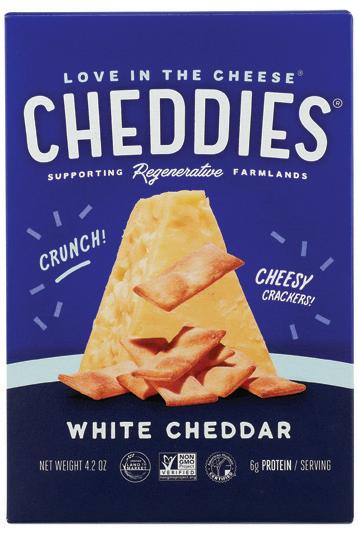

Upgrade your laundry game while eliminating the large plastic jugs! This biodegradable detergent requires no measuring, no mess. Each laundry strip packs ultraconcentrated, hypoallergenic, cleaning power into a small, premeasured strip of liquidless laundry detergent that you just toss in the wash. Easy, effective, eco-friendly.
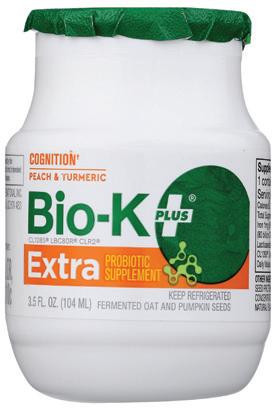
This vegan drinkable probiotic contains 80 billion live and active bacteria plus Cereboost American ginseng, studied for its effects on cognitive performance, cognitive function, and working memory.* Carefully crafted from fermented oat and pumpkin seeds, the gluten free peach and turmericflavored probiotic contains only 6 g of sugar.
Enhance glucose disposal with this advanced formula. With proven ingredients like berberine and lipoic acid, it may help you partition nutrients more effectively, maintain and reset insulin sensitivity, boost your immune system, reduce inflammation, and achieve better muscle fullness and improved vascularity.*
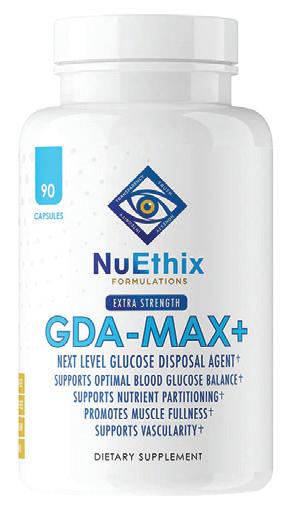
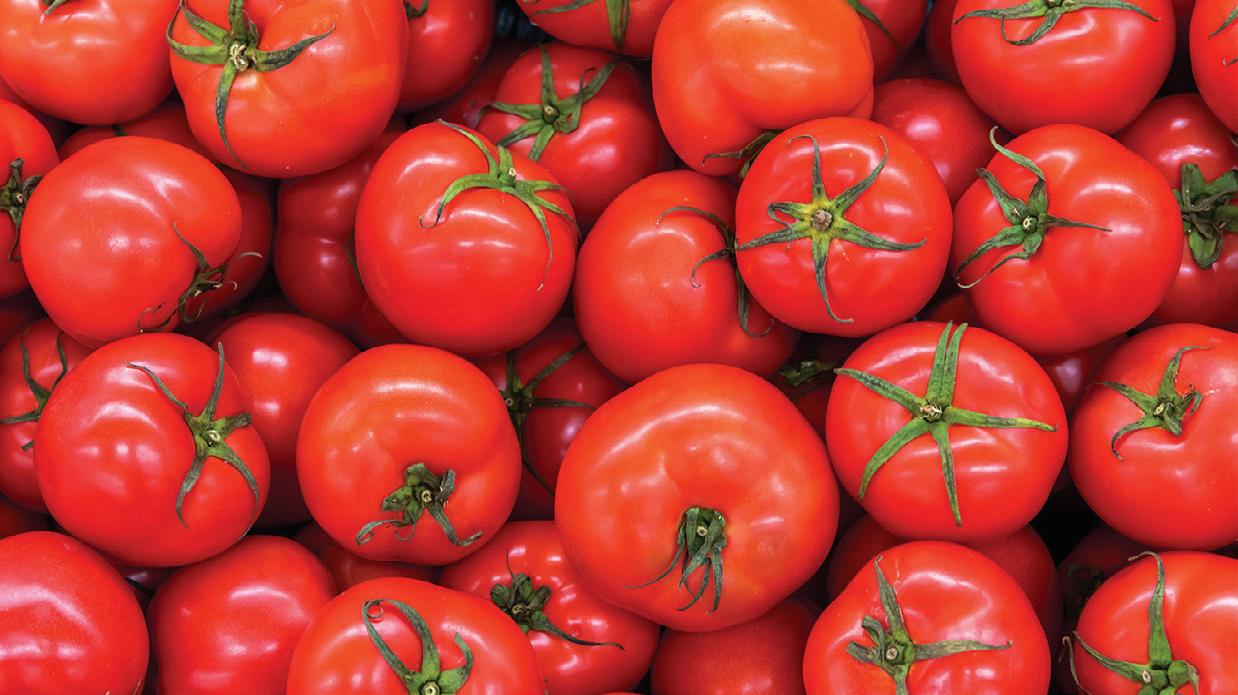
Red is an emotional color, considered to be the color of energy, passion, and action. Studies have shown that when we see the color red, our blood pressure elevates, our breathing becomes more rapid, and we are more likely to take action. Red can also have a powerful physical effect on us because red fruit and vegetables get their colors from the natural presence of carotenoid and anthocyanin antioxidants. Antioxidants have the critical job in our bodies of protecting our cells. One of our nutritional goals is to get a broad spectrum of antioxidants, and one of the best ways to do that is to eat a broad spectrum of colors in our diets. The focus of this article is red foods and how they can enhance our health. Here are some red foods to consider.
Beets. Beetroot is are the newest friend to the athlete since it may help improve vascular function and delay the onset of fatigue in healthy adults. But this benefit seems to extend beyond athletes, as nitrate-rich beet juice may help lower blood pressure and improve vascular function in adults with high cholesterol. Try adding chopped beets to salads, or
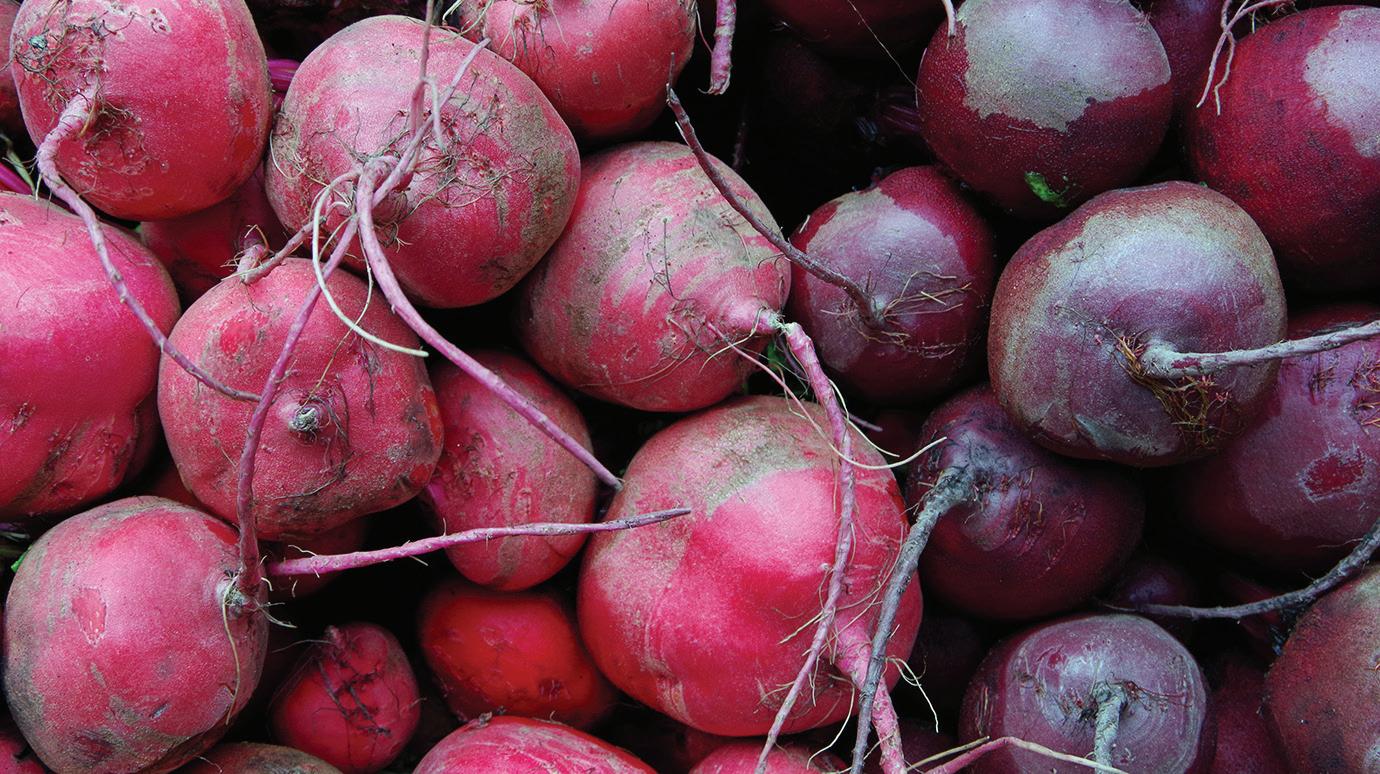
use beet juice powder as an addition to smoothies. Tomatoes. Tomatoes are naturally rich in the antioxidant lycopene, which gives them their bright red color. Studies have found that increasing lycopene intake may decrease the risk of certain cancers, especially prostate cancer. Studies have also shown that lycopene benefits heart health. Tomatoes are a versatile fruit that can be used fresh in salads and sandwiches, or cooked to make sauces, soups, and casseroles. Another red summer fruit full of lycopene? Watermelon!
Cherries. Red tart cherries are rich in vitamin C and a variety of antioxidant flavonoids. They can help maintain cardiovascular health and support joint function. Cherry juice has been used to ease the symptoms of inflammatory conditions such as gout and fibromyalgia. Tart cherries also contain melatonin, a hormone that regulates your sleep and wake cycles, which may support better sleep. Use cherry juice in smoothies, or add fresh cherries to yogurt or muffins. ●
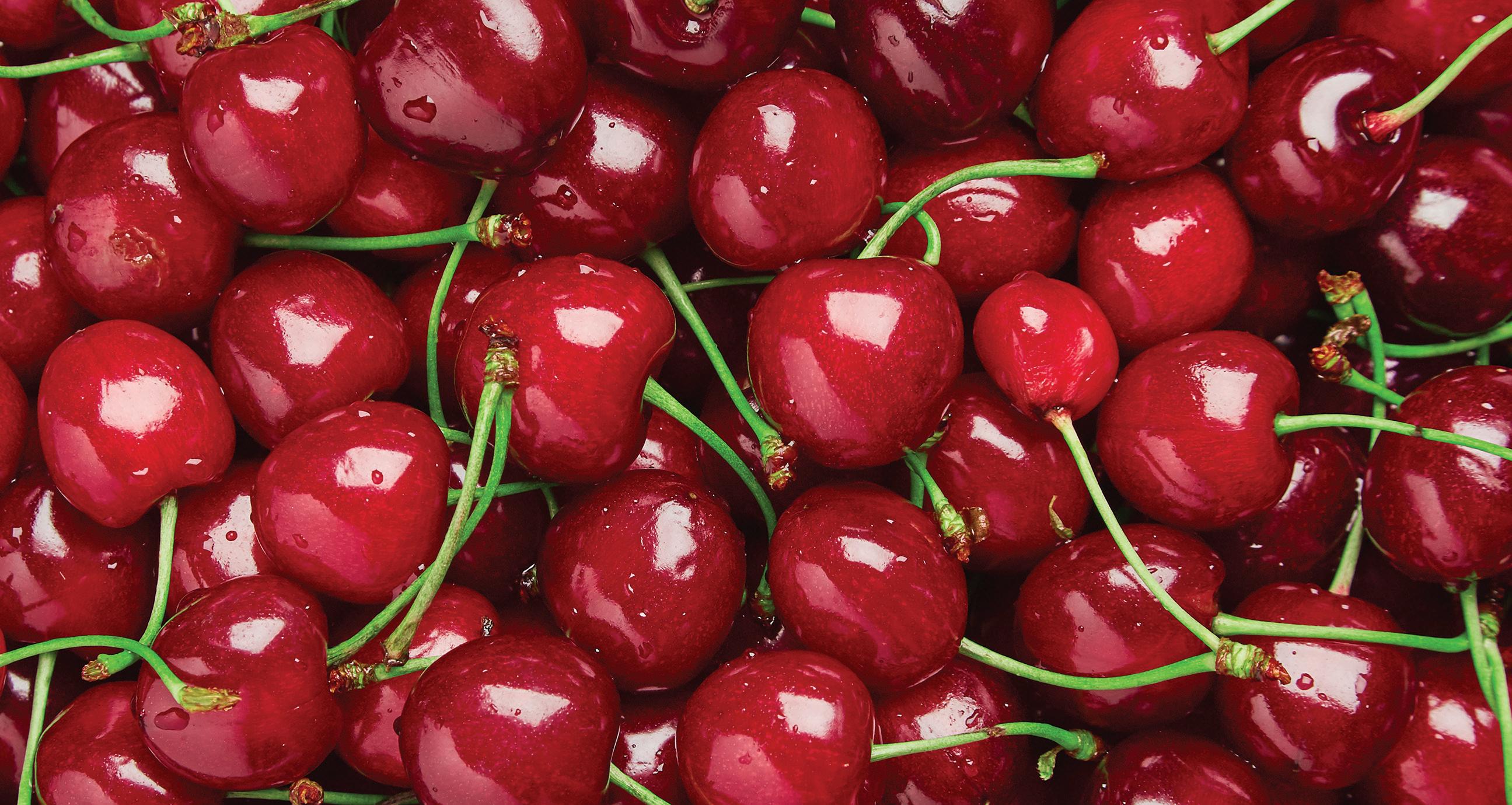















































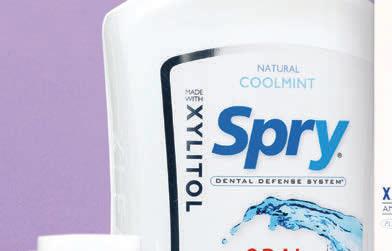

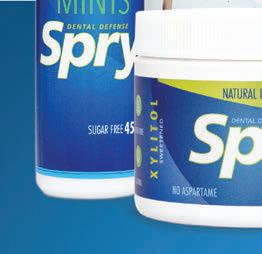
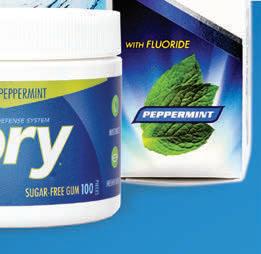












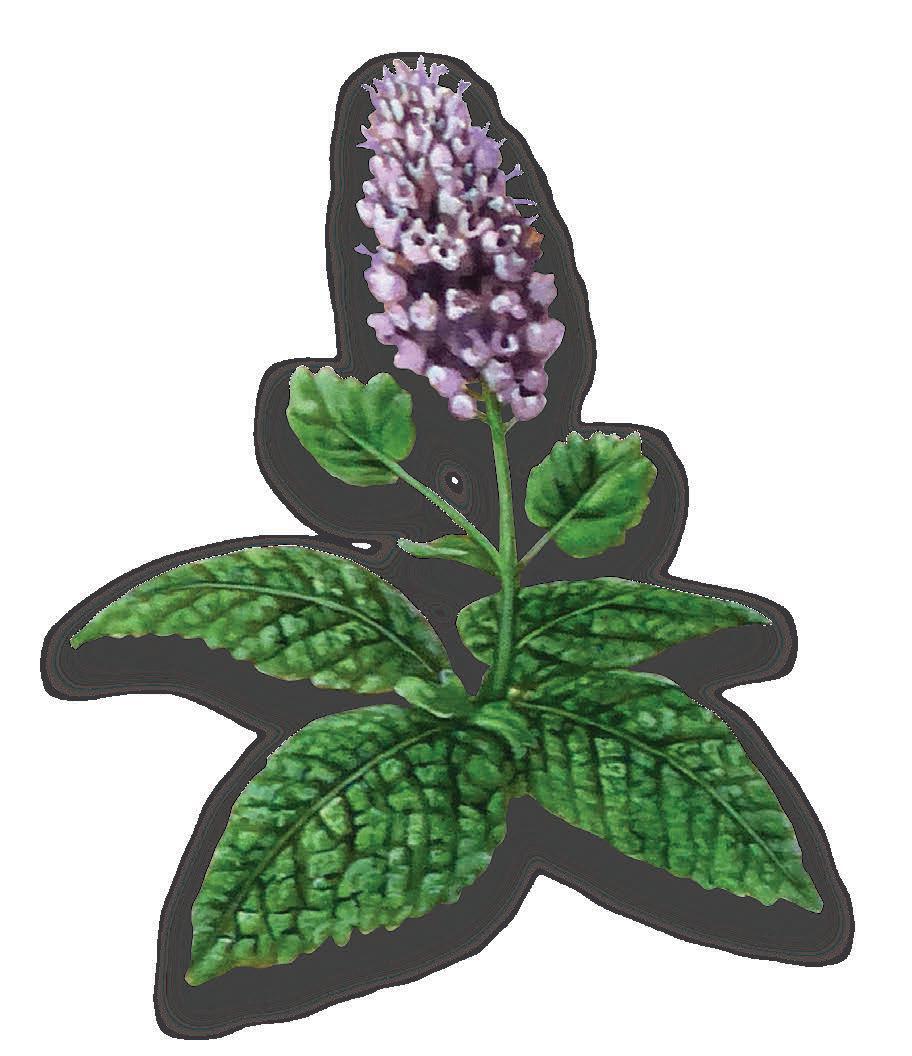

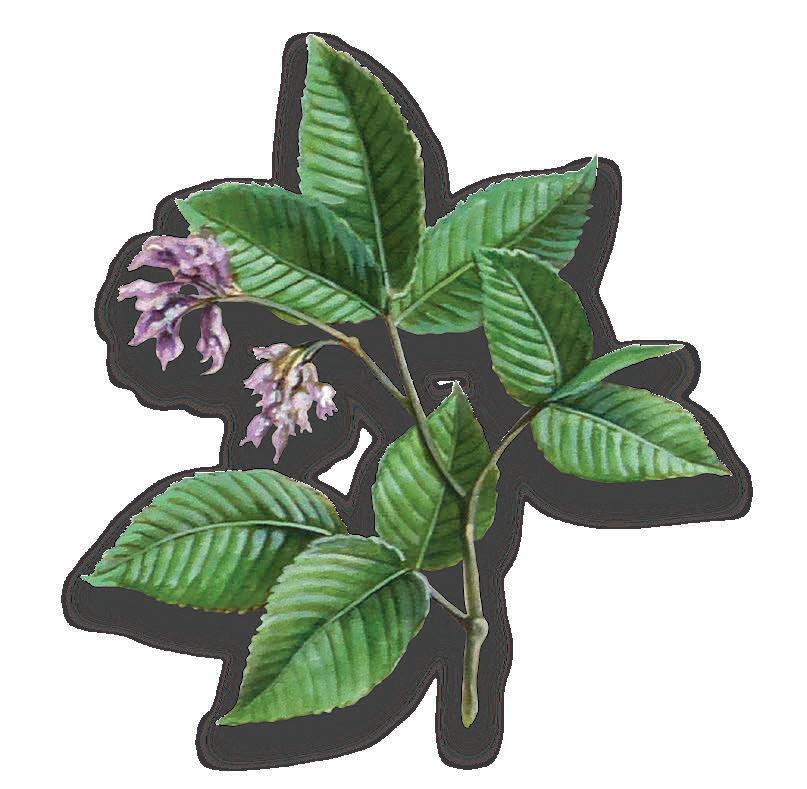



Fortunately, eating certain foods can help improve brain health and cognitive function.
What we eat interacts with the gut during the digestive process, impacting the gut-brain connection. If we consume unhealthy and inflammatory foods, these items feed the bad microbes in our guts. This sets us up for a state of inflammation, triggering how we think and feel. To help avoid an inflammatory state, reduce processed foods, sugarfilled items, and unhealthy fats in your diet.
Colorful fruits and vegetables, nuts, olive oil, and omega-3-rich foods (fatty fish, flaxseeds) offer anti-inflammatory nutrients and antioxidants that boost brainpower.

Spinach can be finely chopped and added to sauces, soups, and smoothies. This leafy green is high in lutein, an antioxidant that protects the brain from inflammation and free radical damage.
Salmon is another great option for brain health, as it has a high omega-3 fat content. Studies have
linked consuming this flavorful fish to reductions in age-related cognitive decline, protection against Alzheimer’s disease, and better cognition and mood.
Include all types of beans in your diet for their wealth of nutrients (iron, folate, magnesium) to support brain cell membranes and functioning. Add beans to chilis, salads, and soups.
Tomatoes offer vitamins A and C, as well as lycopene for improving cerebral function. Eat the cherry variety as a snack, and add all varieties to salads, sides, and main dishes.
Other items to shop for include avocados, green tea, eggs, dark chocolate, broccoli, oranges, green leafy vegetables, olive oil, flaxseeds, blueberries, and beets. These ingredients help boost cognitive health.
Try the following healing recipes to help sharpen your brain and improve cognition. ●
SELECTED SOURCES “The best foods to eat for better memory and brain health,” www. ClevelandClinic.org, 3/18/22 • “Brain health diet,” Pacific Brain Health Center, www. PacificNeuroscienceInstitute.org • “Foods linked to better brainpower,” Harvard Health, https:// health.harvard.edu, 3/6/21 • “The MIND diet for brain health,” by Lisa Fabian, www.TasteforLife. com/mind-diet
Cognitive issues like impaired thinking, memory lapses, confusion, and difficulty concentrating can make us feel frustrated and not our best.
15 min prep time + banana freeze time serves 2
From The Brain Health Kitchen by Annie Fenn, MD ($35, Artisan Books, 2023)
1 medium banana, peeled, cut into pieces, and frozen
4 small ice cubes
2 c unsweetened plant-based milk
1 small ripe avocado
1 (1-inch) piece fresh ginger, peeled and thinly sliced
1 (½-inch-thick) piece of lime (peel and all)
2 packed c baby spinach or tender spinach leaves
¼ c fresh mint leaves
1 tsp raw honey (optional)
2 tsp sesame seeds or hemp seeds (optional)
1. In the following order, layer banana, ice cubes, milk, avocado, ginger, lime, spinach, mint, and honey (if using) in a blender. Blend on high speed until smooth, about 1 minute.

2. To serve, divide between two glasses and sprinkle with sesame seeds, if using.
Kitchen Note: Getting your daily greens in shouldn’t feel like a chore. Here you’ll transform a generous serving of spinach with the bright flavors of ginger, lime, and mint. Avocado’s mild flavor fades into the background but adds satisfying creaminess and body. For even more omega 3s, sprinkle additional seeds on top.
Per serving (with the honey and sesame seeds): 297 Calories, 6 g Protein, 0 mg Cholesterol, 32 g Carbohydrates, 11 g Total sugars (3 g Added sugars), 12 g Fiber, 19 g Total fat (3 g sat), 218 mg Sodium, ★★★★★ Vitamin B6, E, K, Calcium, Folate, ★★★ Vitamin B2 (riboflavin), C, Phosphorus, ★★ Vitamin A, B1 (thiamine), Iron, Magnesium, Potassium, ★ Vitamin B3 (niacin), Zinc
From A Generous Meal by Christine Flynn ($32, Penguin Books, 2023)
1 jar (8 oz) sundried tomatoes packed in oil
5 cloves Garlic Confit (recipe follows), plus a drizzle of its oil
1 Tbsp capers
1 Tbsp white vinegar
50 min prep time serves 8
¼ c fresh flat-leaf parsley, briefly chopped
Extra-virgin olive oil, for drizzling
1 (2- to 3-lb) salmon fillet 1 tsp salt
1. Place tomatoes, garlic confit and its oil, capers, and vinegar in a high-speed blender and pulse to combine. Unplug blender and, using a rubber spatula, scrape down sides of jar to make sure everything is well mixed. Plug in blender again. Add parsley and pulse again a few times. Set the tomato-garlic tapenade aside.
2. Preheat oven to 250°. Line a rimmed baking sheet with parchment paper and drizzle with oil.
3. Lay salmon on prepared baking sheet, skin side down. Sprinkle with the salt. Drizzle with a little more oil. Set oven to broil. Broil for 15 minutes.
4. Remove salmon from oven and smoosh tapenade over flesh side of fish. It doesn’t have to be too neat, so don’t be fussy. Reduce oven heat to 250°. Bake for another 10 to 15 minutes, until fish is just cooked through. This dish is very good served hot, but it’s also fine served at ambient temperature or even chilled.
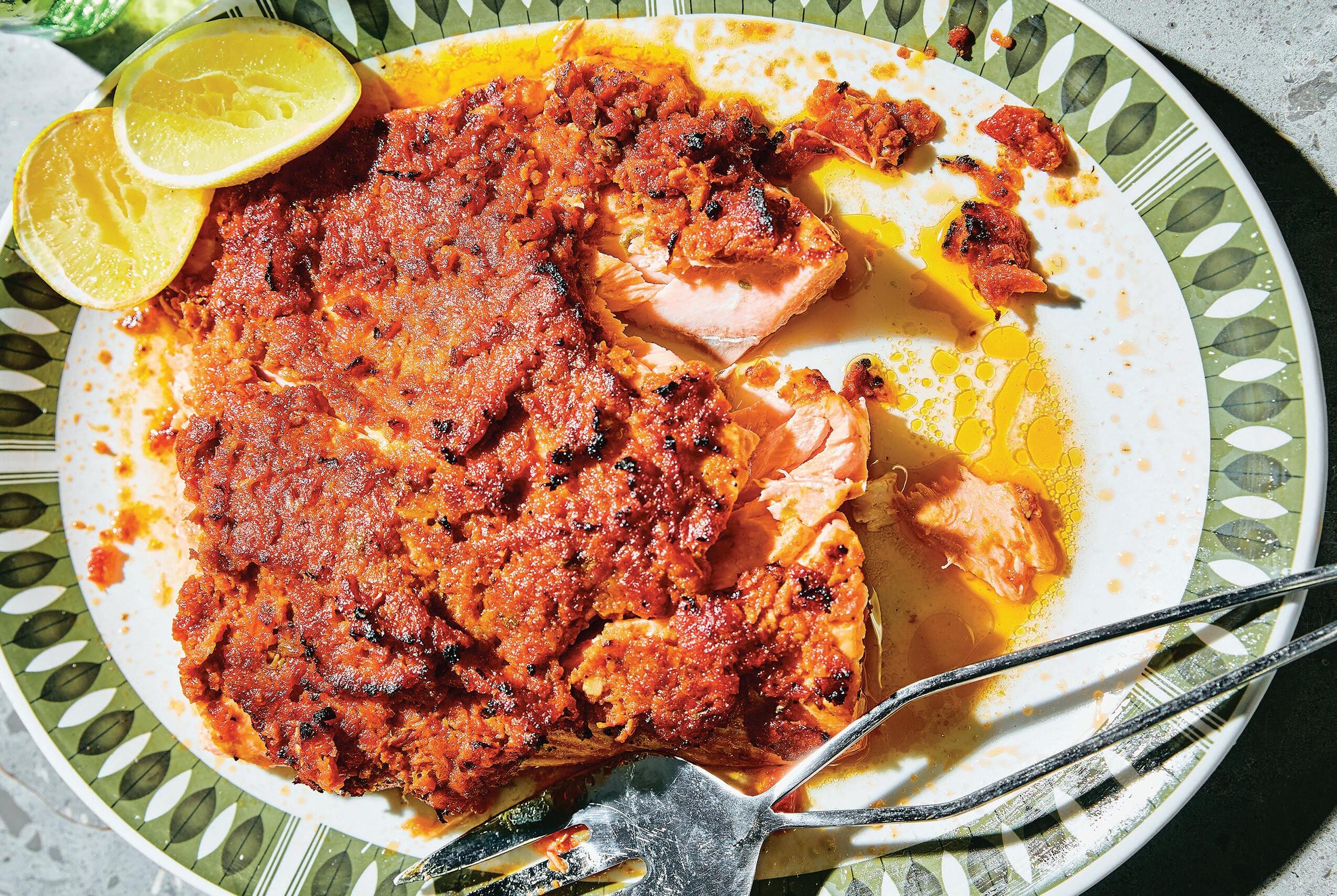
5. Store leftovers in an airtight container in the fridge for up to 4 days. Leftovers are very good smashed onto crusty bread with thinly sliced cucumber and just a whisper of aioli.
Per serving: 409 Calories, 35 g Protein, 94 mg Cholesterol, 2 g Carbohydrates, 1 g Total
fat (6 g sat), 420 mg Sodium, ★★★★★ Vitamin B3 (niacin), B6, B12, D, Phosphorus, ★★★★
★★ Vitamin B2 (riboflavin), ★ Vitamin A, C, Folate, Magnesium, Potassium
From A Generous Meal by Christine Flynn ($32, Penguin Books, 2023)
½ lb peeled garlic cloves
2 to 3 red bird’s eye chilis
1½ c extra-virgin olive oil
5 min prep time makes about 2 cups
1. In a small saucepan over medium-high heat, bring garlic, chilis, and olive oil to just barely a simmer. Reduce heat to low. Cook confit, stirring occasionally, for about 30 minutes, or until garlic is tender and easily pierced with a paring knife.
2. Using a slotted spoon, transfer garlic to a clean 16-ounce jar with a tight-fitting lid. Pour oil over the top. Refrigerate immediately. Store garlic confit in an airtight container in the fridge for up to 3 weeks.
Kitchen Note: Preparing garlic confit in batches means you only have to peel a bunch of garlic once (or you can really treat yourself and buy pre-peeled garlic; there is no shame in that). The flavor and texture of the garlic is mellow enough, so that biting into it is less jarring. The confit oil is also delicious and great for drizzling on veggies, bread, soups, salads, or anything you think might be enhanced by a drizzle. If you want to keep the garlic confit for longer than a few weeks, you can freeze it and use as normal.
15 min prep time serves 4
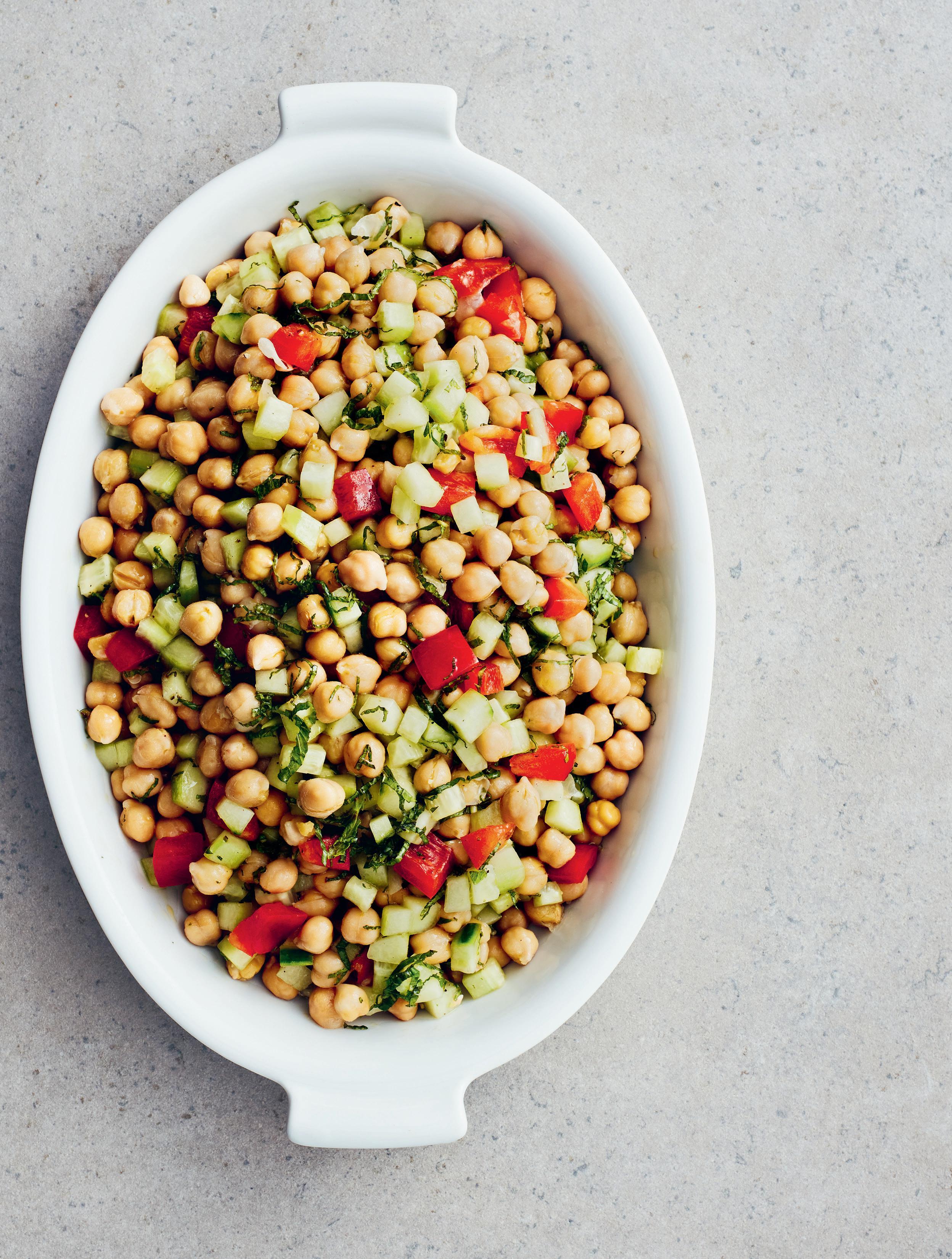
From The North African Cookbook by Jeff Koehler ($54.95, Phaidon Press, 2023)
1 lb 2 oz (3 c) canned chickpeas (garbanzo beans), rinsed
¼ red bell pepper, seeded and diced
1 cucumber, peeled and finely diced
5 Tbsp extra-virgin olive oil
1 Tbsp fresh lemon juice
Salt and pepper
4 packed Tbsp finely chopped mint
1. Put chickpeas (garbanzo beans) into a large saucepan with about 2 cups water and bring to a boil. Drain in a colander and leave to cool to room temperature.
2. Put cooled chickpeas into a salad bowl with diced bell pepper and cucumber.
3. Put oil and lemon juice into a small bowl and whisk together until cloudy. Season with salt and pepper and pour over chickpeas. Scatter over mint and toss well. Serve.
Kitchen Note: A vibrant, easy salad full of body, texture, and color. The tang and minty herbal aromas with the earthiness of the chickpeas and crunch of fresh bell peppers is a delightful combination. This recipe uses canned chickpeas. Bringing them to a quick boil will remove their canned flavor and allow them to soften.
Per serving: 733 Calories, 32 g Protein, 0 mg Cholesterol, 99 g Carbohydrates, 18 g Total sugars (0 g Added sugars), 19 g Fiber, 26 g Total fat (3 g sat), 331 mg Sodium, ★★★★★ Vitamin B1 (thiamine), B6, Folate, Phosphorus, ★★★★ Iron, Zinc, ★★★ Vitamin K, Magnesium, ★★ Vitamin B2 (riboflavin), C, E, Potassium, ★ Vitamin B3 (niacin), Calcium
In summer, we spend more time outside in the hot sun doing various activities. Many of us like to hang out at the pool, the lake, or the beach. Despite being surrounded by water, we sometimes forget that we still need to drink water to avoid dehydration. Sports practices begin in summer and sweating a lot can contribute to dehydration, which has a negative effect on sports performance.
Dehydration is using or losing more fluid than you take in, so your body doesn’t have enough water and fluids to function normally. This can result in electrolyte imbalances. Even mild dehydration can drain your energy, make you weaker, and cause cloudy thinking. Severe dehydration can lead to dizziness, nausea, vomiting, and serious illnesses like heat stroke.
Electrolytes are minerals—like sodium, calcium, magnesium, and potassium—that help balance the amount of water in your body and help maintain appropriate pH levels. Imbalances in electrolytes, caused by dehydration and sweating, can result in muscle twitching or fatigue. Just as an example, a muscle needs calcium, sodium, and potassium to contract. If any of these minerals become imbalanced, it can lead to either muscle weakness or excessive contraction (twitching).
So drink up and stay hydrated and balanced. Sounds simple enough, right?
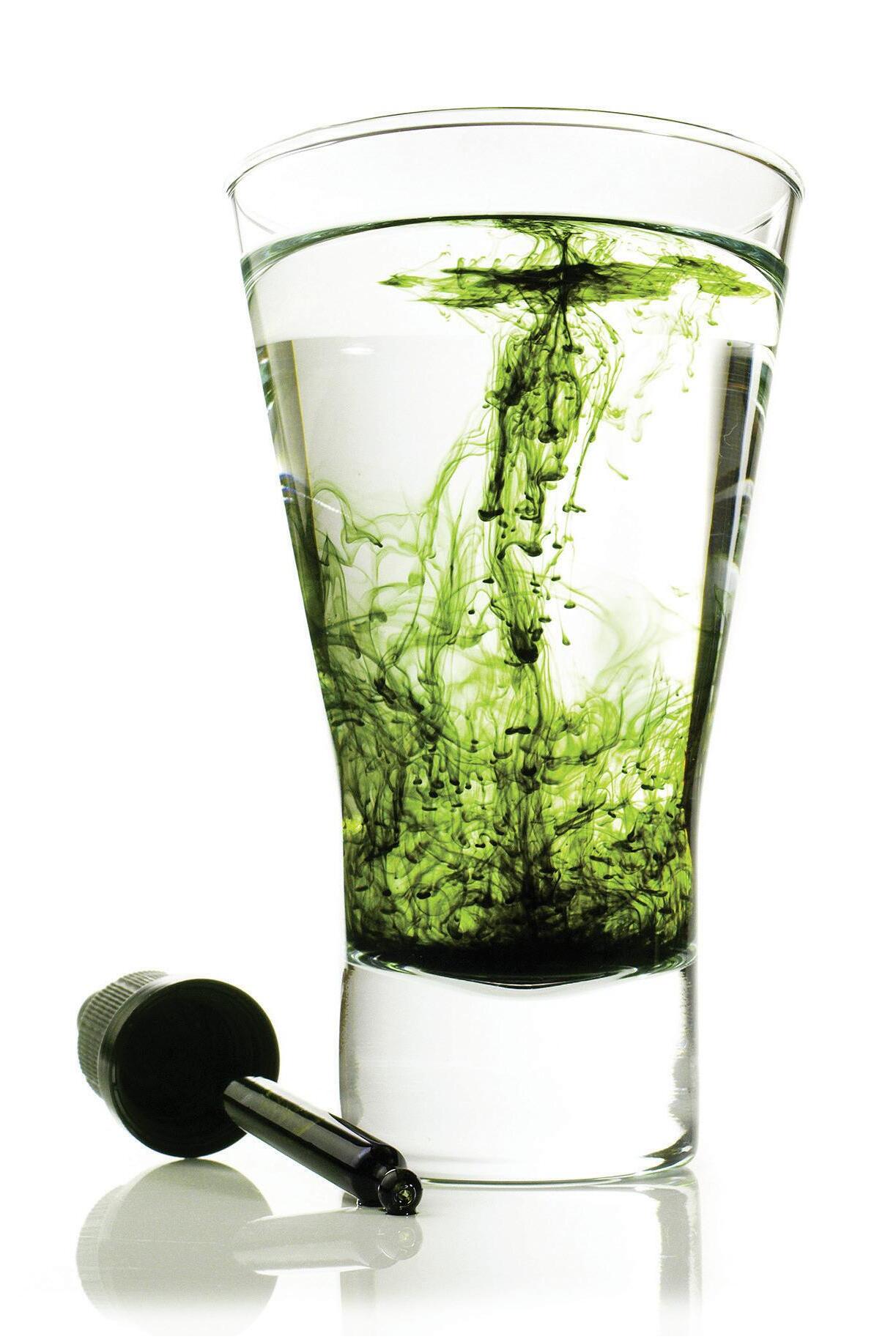
Water. The very best option to stay hydrated is water. We don’t think of it as a nutrient, but water is
an essential nutrient for your body. Alkaline, or high pH water, can be even better for hydration since it usually has electrolytes added. If you don’t like to drink plain water, drink infused water or flavored sparkling water. Be sure to check the nutrition label and avoid sugar, artificial sweeteners, and artificial flavors. The other option is to make your own infused water with fruit and herbs. This is a way to make water more interesting and fun, and the options are endless! You can also boost your water with collagen, superfruit juice, chlorophyll, or other superfood mix-ins.
Coconut Water. Also called coconut juice, this natural isotonic beverage is high in potassium and other electrolytes, making it a great fluid replacement beverage for exercise and sports events. And it has no added sugar or sweeteners, making it an even better choice than the common sports beverages. Coconut water is also available combined with pure fruit juice.
Tea. Tea can be a good option if you choose right. Choose from black, green, white, or rooibos (red) teas, or a variety of herbal teas. Brew tea with hot water, then pour over ice for a refreshing iced tea to cool you off on a hot day. Or try one of the many ready
As the summer sun and the temperatures heat up, hydration becomes critical.
to drink bottled teas available. Remember that black and green tea contain caffeine, a diuretic, so be sure you still supplement your tea drinking with some water. And watch the sugar content of bottled teas as they can be high! For this to be a good option to fight dehydration, you want to go with unsweetened or just lightly sweetened tea.
Fruits & Veggies. If you need another reason to eat those fresh fruits and veggies, here it is! Certain fruits and vegetables have a high water content. Think of summer’s bounty—watermelon, tomatoes, lettuce, and cucumbers—when seeking out high water fruits and veggies.
Sports Drinks. Sports Drinks were designed for one thing: to be used during sports practices and competitions. They are good for these times only. Outside of sports, they are not a good beverage option because they can be very high in sugar, full of artificial colors and flavors, and even somewhat high in sodium. This is fine and even good for sports events and practices, but not for daily drinking. Another, and maybe better, option is to make your own sports drink with water and an electrolyte mix specifically designed for hydration. This will help keep sugar in check. ●
Paragon Plus™

Liquid Chlorophyll
Liquid green superfood.*
Provides antioxidant support.*
May support detoxification and immune health.*
Alcohol free.


Plant-based rapid hydration and energy support powder.*
Electrolytes from coconut water and pink Himalayan salt.
With B vitamins to support energy function.*
From the Taste for Life test kitchen
6–8 tea bags
2 quarts cold water
Fresh fruit (optional)
Fresh herbs (optional)
1. Fill a large pitcher with cold water. Cut off tags, if needed, and add tea bags to the pitcher. Refrigerate tea for 6–12 hours.
2. Remove tea from refrigerator. Use a slotted spoon to take out tea bags; discard or compost them. Add fruit or herbs, if desired. Stir to mix.
3. Pour into glasses and enjoy! Cover and store any unused iced tea in the refrigerator for 3–5 days.

Kitchen Note Making iced tea at home couldn’t be easier. All you need are a few simple ingredients and a refrigerator. You can start the process before you go to bed at night, and enjoy fresh, cool iced tea in the morning. This beverage is incredibly versatile—you can use just about any kind of tea (black, green, Earl Grey, chamomile . . . the list goes on and on), and you can add even more fun flavors without a lot of extra calories by infusing your tea with fresh fruit and herbs. You can also add flavor with lemonade, fruit juice, or a dash of sparkling water. Reserve some iced tea from your first batch to make ice cubes to use in the next— they won’t water down your drink the way plain ice does.
5 min prep time + 6–12 hours brewing time makes 8 cups of iced tea
 BY KELLI ANN WILSON
BY KELLI ANN WILSON
Kombucha is a modern wonder with ancient origins. First brewed in China, then Japan and Russia, kombucha made its way into Europe at the beginning of the twentieth century.

Reports of its health benefits and unique flavor profile have spurred growth in the US, with sales of kombucha on the rise and expected to reach $7 billion by 2027.
Kombucha is a fermented drink made with sweetened black or green tea and a SCOBY (or symbiotic culture of bacteria and yeast). The organisms in the SCOBY form a mat-like structure that typically floats on the surface of the mixture. This microbial community transforms the sugar in the tea into acids—by means of the same process that turns cabbage into sauerkraut—over the course of a week or more. When the fermentation process is complete, the SCOBY is removed, and the result is a fizzy, slightly sweet drink with a tangy but mild vinegar-like taste.
Kombucha is rich in beneficial chemicals and other health-giving properties, including amino acids, antioxidants, minerals, and vitamins. Research suggests that kombucha has antibacterial, antidiabetic, and antioxidant properties, and may help to lower
cholesterol levels and aid detoxification of the liver.
As a fermented food, kombucha is also a great source of probiotics (“good” bacteria) that have been linked to many positive health outcomes including better digestion, improved immunity, successful weight management, and a lower risk of hypertension and heart disease.
Emerging research also shows that fermented foods, including kombucha, may have both long- and shortterm impacts on brain function. Comparing data from more than 200 fermented foods, scientists found that almost all of them contained metabolites linked to better brain health. “Fermented sugar-based products and fermented vegetable-based products are like winning the lottery when it comes to gut and brain health,” said Ramya Balasubramanian, a researcher at University College Cork (Ireland). ●
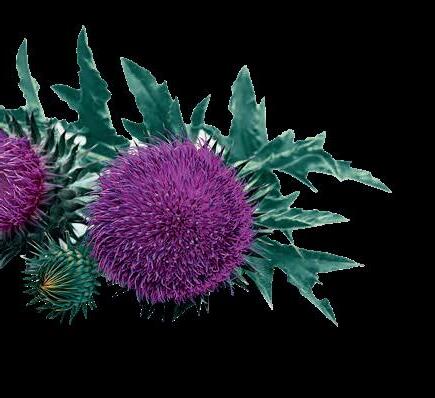
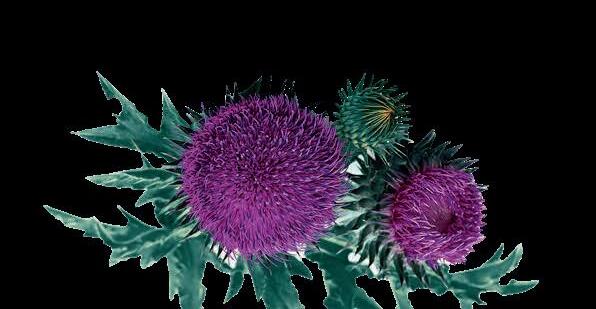

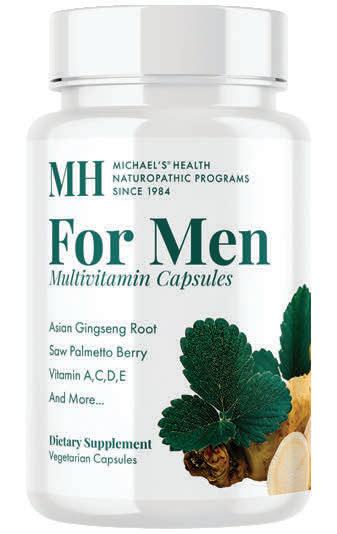



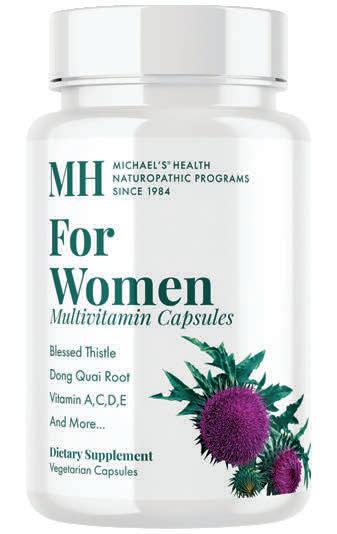
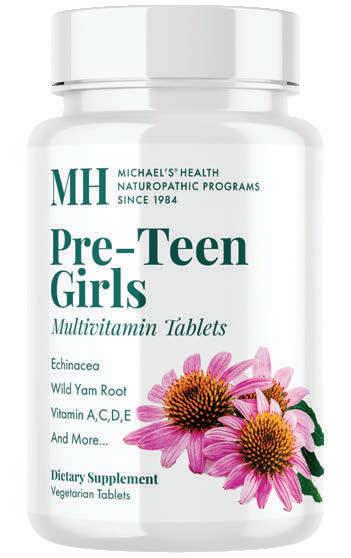
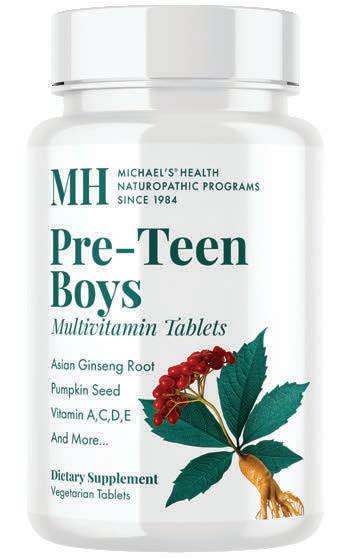
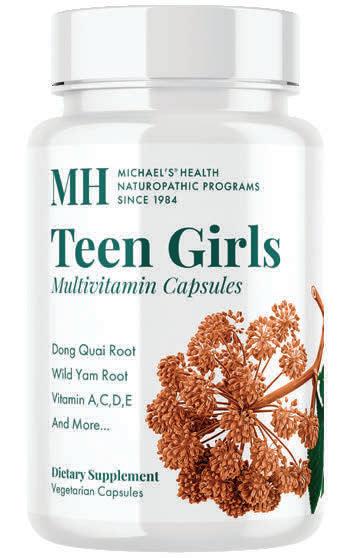

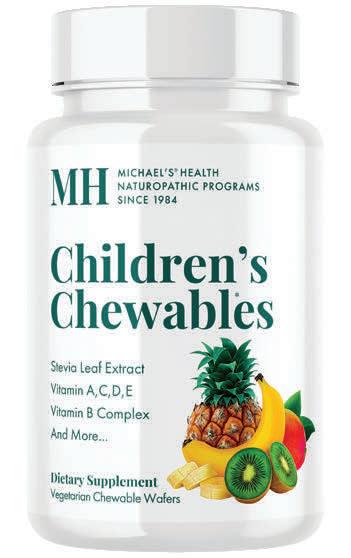


 BY ANN LOUISE GITTLEMAN, PHD, CNS
BY ANN LOUISE GITTLEMAN, PHD, CNS


In addition to bone broth, hyaluronic acid, and omega 3s, certain supplements may also help to ease the pain, stiffness, and diminished function associated with many inflammatory conditions. Always consult your doctor before taking any new supplements. Here are a few to consider.
• Curcumin (Turmeric)
• Glucosamine and chrondroitin
• Probiotics
• Vitamins A, B6, C, D, E, and K
• SAM-e
Given the right nutrients, your joints can repair themselves, which means less joint pain.
When your joints are stiff, aching, and swollen first thing in the morning, you may have osteoarthritis, the most common form of joint damage. This degenerative disease, caused by the breakdown of cartilage, leads to bone rubbing on bone.
The cushion in your joints between the bones is cartilage, which is made up of a combination of proteins and sugars. When it’s healthy, it allows bones to glide over each other and absorbs the shock of any movement. When your joints are inflamed, misaligned, or worn, this cushion of cartilage thins, breaks down, and can no longer do its job, causing joint pain and osteoarthritis. Until recently, doctors believed articular cartilage—the cushion in our hip, knee, and ankle joints—could not be repaired once it was injured. The job of this protective covering over the ends of our bones is to cushion our joints from the pressure we exert on them.

Thanks to the work of doctors at Stanford like Constance Chu, MD, we have discovered that articular cartilage slowly but surely repairs itself. Given rest and the right nutrients, it takes about a year, according to her MRI studies.
our bodies, holding together our tendons, muscles, bones, cartilage, joints, skin, and more. By the time we turn 21, our collagen production slows down and declines as we age, causing thinning and weakening of the cartilage in the joints, which leads to arthritis. The good news is daily weight-bearing exercise like walking enables cartilage to repair more easily and keeps collagen strong.
No conversation about collagen is complete without bone broth. All collagen comes from animal proteins, and is found in the “gristle,” the toughest, most difficult to eat cuts of meat. If you add bone broth to your daily diet, you will notice over time the youthful glow return to your skin, which is the “beauty” of having enough collagen.
Your joints not only have cartilage as a cushion, but also a thick, viscous liquid lubricating them and protecting the cartilage from wearing down. Hyaluronic acid is the starchy substance in this fluid that thickens and creates viscosity similar to grease or motor oil, which is the hallmark of its jointprotective effects.
People with osteoarthritis have been found in studies to have low levels of hyaluronic acid in this fluid, which leads to the characteristic joint damage. A good hyaluronic acid supplement can reduce joint pain and increase hyaluronic acid in the joints over time. The studies done have cautioned against using too much, which is amounts of 200 mg or more.
Omega-3 fatty acids found in fish oil and krill oil are superstars for joint health. Studies show there are benefits for both osteoarthritis and rheumatoid arthritis sufferers. In both cases, the omega 3s reduce the amount of inflammation present in the thick fluid that bathes the joints.
Although it takes time, with rest and nourishment from bone broth, hyaluronic acid, and omega 3s, our joints do repair and rebuild themselves. A little care from the inside will help ensure you live your life in freedom from joint pain. ●
SELECTED
www.WebMD.com • “Efficacy and safety of Curcuma domestica extracts compared with ibuprophen in patients with knee osteoarthritis . . .” by V. Kuptniratsaikul et al., Clinical Interventions in Aging, 2014 • “Fish oil in knee osteoarthritis . . .” by C.L. Hill et al., Annals of Rheumatic Diseases, 1/16 • “Inflammation” by V.J. Drake, Linus Pauling Institute, Oregon State University, https://lpi.oregonstate.edu • “Krill oil improved osteoarthritic knee pain in adults with mild to moderate knee osteoarthritis: A 6-month multicenter, randomized, double-blind, placebo-controlled trial” by W. Stonehouse et al., American Journal of Clinical Nutrition, 9/2/22 • “Omega-3 fatty acids for the management of osteoarthritis: A narrative review” by D.M. Cordingley and S.M. Cornish, Nutrients, 8/16/22
Collagen is the most abundant protein in
SOURCES “Bioavailable turmeric extract for knee osteoarthritis: A randomized, non-interiority trial versus paracetamol” by S. Singhal et al., Trials, 1/30/21 • “Health benefits of hyaluronic acid,” 4/22/21; “Supplements for joint pain,” 11/25/22; “Vitamins that fight inflammation,” 4/15/22,
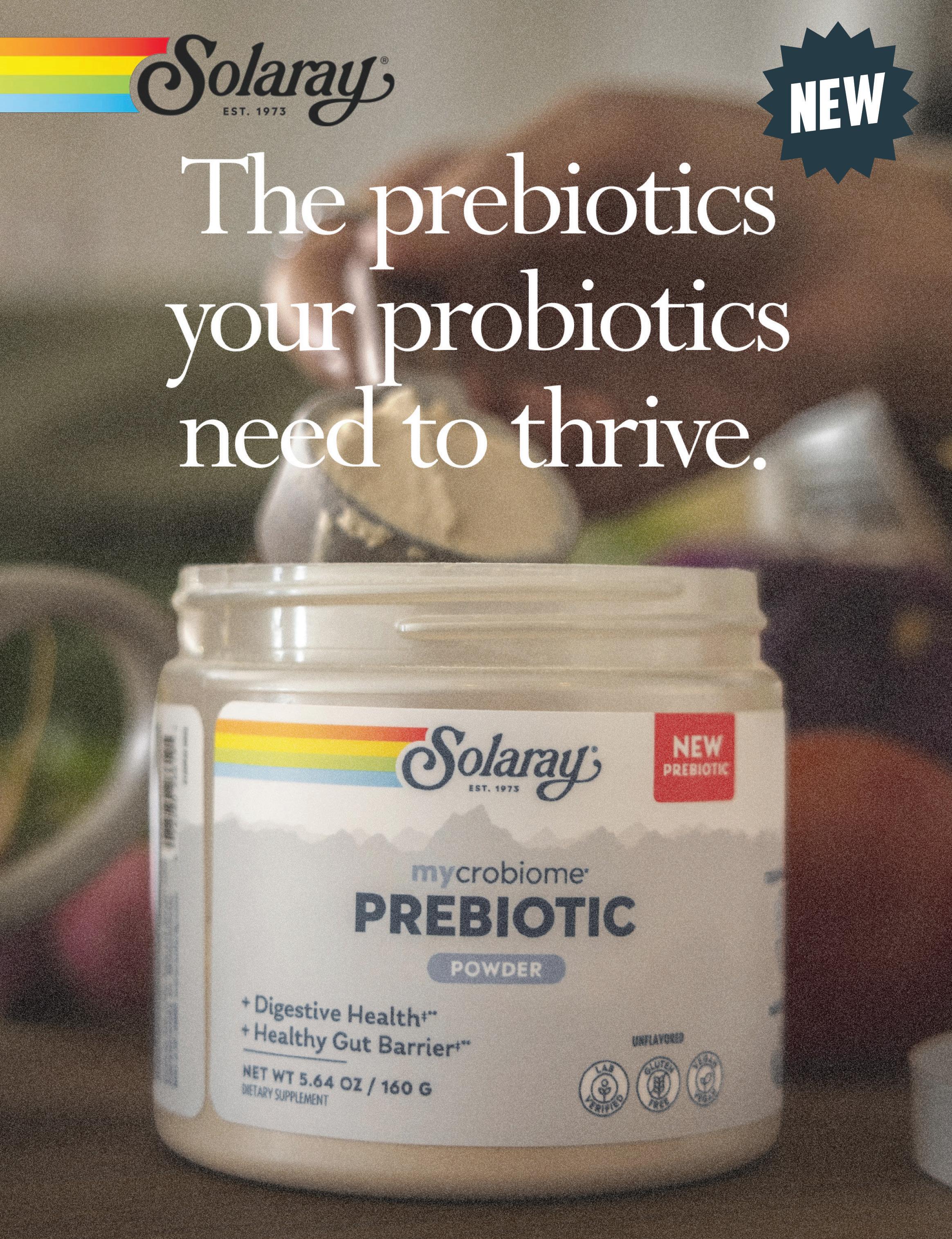
Camping, water skiing, swimming, gardening— whatever it is, most of us will spend more time outside during these summer months. But poor nutrition, stress, lack of sleep, and excessive sun exposure can take a toll, causing dull hair, and wrinkled or blemished skin. Here are some tips to keep your hair and skin protected and glowing all summer long.

Nourish and hydrate hair and skin with a diet full of colorful antioxidant-rich fruits, vegetables, nuts, and seeds. Be sure to drink lots of pure water or iced green tea to stay hydrated, flush out toxins, and maintain moisture in the skin and scalp. B vitamins,
including biotin, are critical for healthy hair and skin, responsible for cell regeneration and repair, while collagen can be helpful for maintaining youthful skin. Boosting vitamin C intake and taking collagen supplements have been found to help support the body’s production of collagen, improving overall skin health and lessening the signs of aging.
NaturesPlus
Berry Lemonade
Collagen Peptides
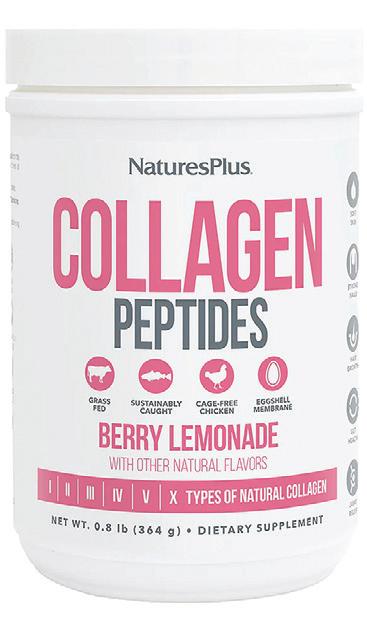
Supplies 20 g hydrolyzed peptides.
Six types of collagen to support hair, skin, nail & joint health*
A delicious, refreshing way to get your collagen.
Protect scalp and skin topically with a natural sunscreen if you plan to be outdoors. The American Academy of Dermatology recommends using a broad spectrum sunscreen with SPF 30 or more, reapplying every 2 hours during sun exposure. Look for broad spectrum protection that is safe for the whole family. Nourishing ingredients, like plant oils and aloe vera, support skin moisture during sun exposure. To keep bugs away, don’t apply chemicals to your skin, but look for natural and effective insect repellents made with essential oils.
Recover from common summertime problems with help from nature. Sunburn occurs from over exposure to the sun. Aloe vera gel, used topically, is cooling, soothing, and speeds healing. Bruises can occur from just about any outdoor activity. Arnica can help ease bruising and swelling, and is also great for sore muscles. Insect bites are common in outdoor settings. Antiseptic and anti-inflammatory tea tree oil can help calm bites, stings, and itching. ●
The flavor of food fresh off the grill is incomparable. With the addition of a hearty rub or a tangy marinade, it tastes even better.
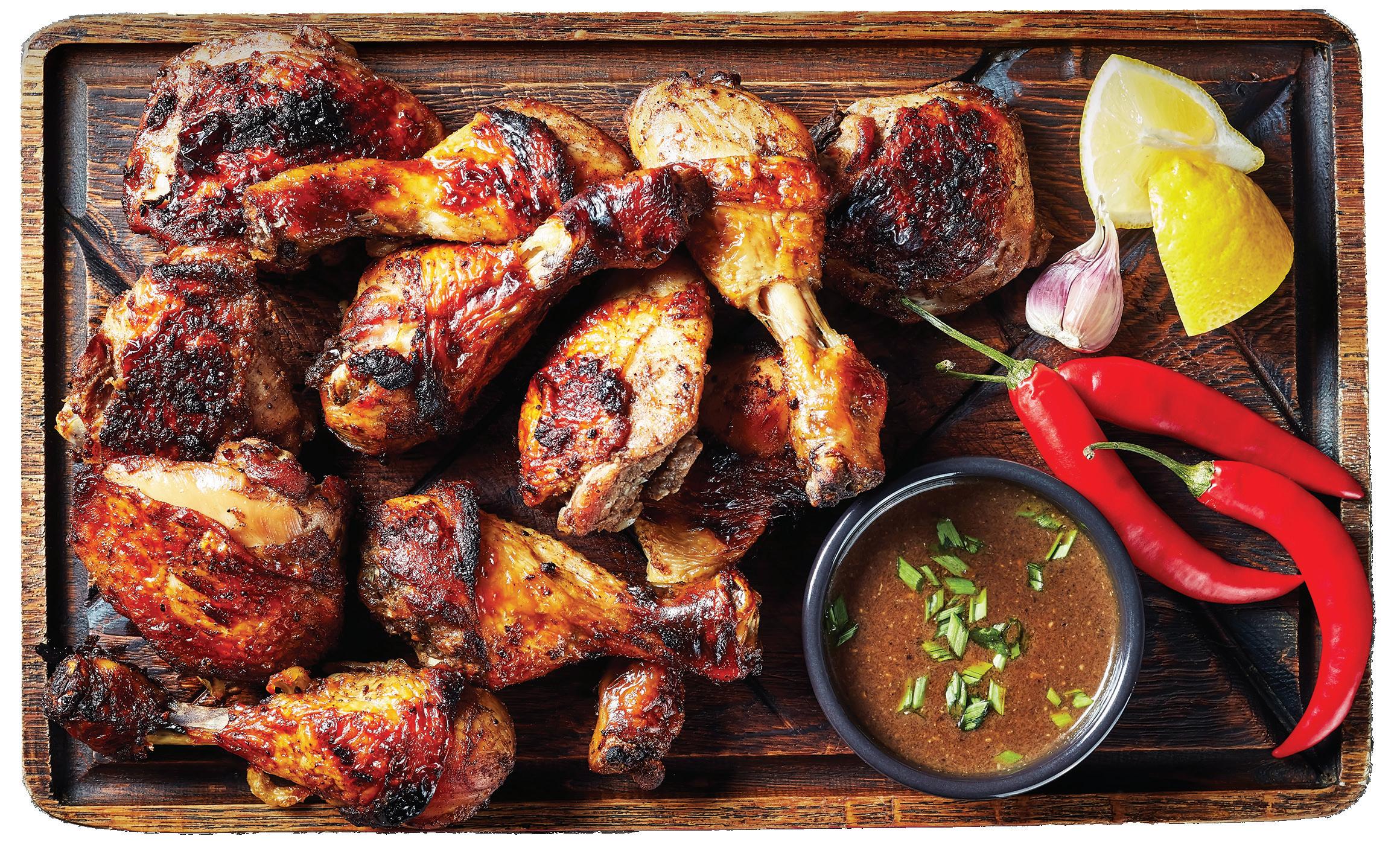
Rubs
Made from dried spices, dried herbs, salt, and sometimes sugar or other sweeteners, rubs can be either dry or wet.
Balance the flavors of sweet, salty, sour, and spicy when making rubs. Sweet ingredients include sugar, brown sugar, or maple sugar. Salty flavors are sea
salt, kosher salt, or other specialty salts. For sour, think lemon pepper or dried citrus peels (lemon, lime, orange). Last comes spicy: chili flakes, chili powder, hot paprika, or ground black pepper.
A wet rub, also known as a spice paste, begins as a dry rub but additional ingredients in the form of liquids are added to make a thick paste. Smother wet rubs over food before grilling.
For the tastiest rubs, use the freshest dried spices and dried herbs you can find. Label homemade rubs with the date they were made, store in airtight containers,
Marinating times vary based on a food’s size, as well as the strength of the marinade. Here’s a rough guide to follow.
• Very large pieces (leg of lamb, turkey, pork shoulder): 24 hours
• Large pieces (beef and pork tenderloins, whole chicken, large whole fish): 6 to 12 hours
• Medium-size pieces (chicken halves or quarters, double-cut pork chops): 4 to 8 hours
• Medium to small pieces (steaks, bone-in chicken breasts or legs, fish steaks, tofu, portobello mushrooms, and other vegetables): 1 to 3 hours
• Small pieces (boneless chicken breasts, fish fillets, shrimp): 15 minutes to 2 hours
and keep them away from heat and light. Use within six months.
There is too much of a good thing when it comes to rubs. So use cautiously! You only need 2 to 4 teaspoons of rub per pound of poultry, fish, or meat. If you need more flavor, you can always sprinkle some more rub on before serving.
You can apply rubs up to two days before grilling. But if you’re pressed for time, rubbing in a few hours before works too. You can also sprinkle dry rubs over food just before it hits the flame.
It’s best to use your fingers to “rub” in a rub. Always wash your hands with soap and water before and after handling raw meat, poultry, and seafood.
Also known as liquid seasonings, marinades are combinations of liquids (oils, citrus juices, vinegars, wine, yogurt); spices; herbs; and aromatics (onion, garlic, soy sauce, Worcestershire sauce, mustard, chili sauce).
Because marinades are wet, meat acquires flavor through a soaking method. The acids present in marinades help tenderize the muscle fibers of meat. The addition of oil helps drier cuts like chicken breast stay moist during cooking.
From Flavor + Us by Rahanna Bisseret Martinez ($29.99, Ten Speed Press, 2023)
2 Tbsp garlic powder
2 Tbsp chili powder
2 Tbsp dried oregano
2 Tbsp onion powder
1 Tbsp smoked paprika
1 Tbsp freshly ground black pepper
1 tsp ground cumin
1 tsp ground nutmeg
1 tsp ground allspice
3 Tbsp light brown sugar
1 Tbsp fine sea salt
1. In a skillet combine garlic powder, chili powder, oregano, onion powder, paprika, black pepper, cumin, nutmeg, and allspice.
2. Toast over medium heat, stirring occasionally for about 4 minutes, until herbs and spices have slightly darkened and their smells penetrate the air.
3. Transfer to an airtight container and let cool. Stir in brown sugar and salt.
4. Store in a cool, dry place for up to 6 months.
Marinate food in nonreactive cooking containers such as glass, stainless steel, or ceramic. Stay away from aluminum and cast-iron cooking vessels. Materials like aluminum and iron can react with acidic marinade ingredients.
Aluminum foil drip pans can be used too. Heavyduty resealable plastic bags are an option as well. Place these bags in a large bowl or dish to catch unexpected leaks.
Do not completely submerge food in marinade. Instead, flip the item several times to make sure it marinates evenly. Drain food from marinade before placing on the grill.
Marinate food in the fridge. Tightly cover the container to prevent strong-smelling ingredients like onions and garlic from spreading to other items. Never reuse marinade. They are for one-time use only!
If you want to use some of the marinade as a sauce, or for basting while grilling, reserve some in a separate container before marinating.
Try not to marinate items for too long. Delicate food like fish can become mushy, and the acids in the marinade can start to “cook” the food. ●
From the Taste for Life test kitchen
Finely grated zest and juice of 1 large lemon
Finely grated zest and juice of 1 large lime
Finely grated zest and juice of 1 large orange
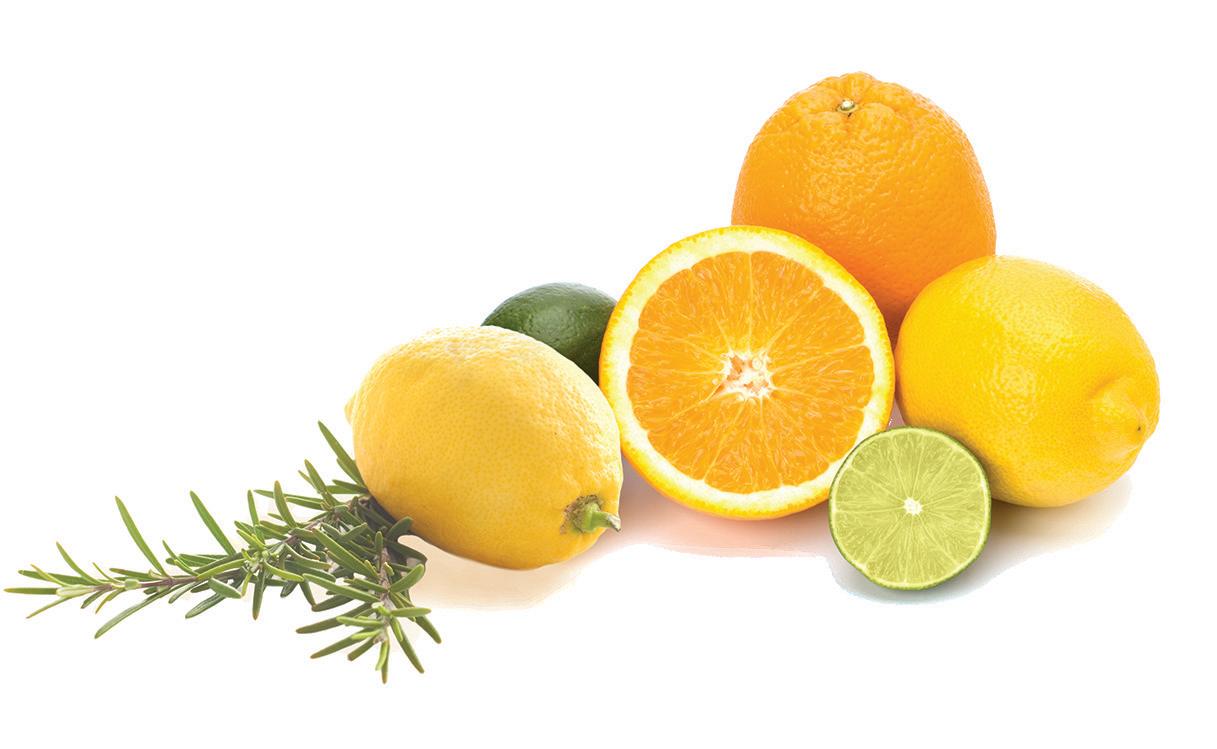
¹⁄³ c extra-virgin olive oil
1 tsp dried rosemary
1 tsp salt
½ tsp ground black pepper
1. Whisk ingredients together in a bowl until well combined.
2. If using on chicken, marinate for 2 hours. If using on fish, marinate for 1 hour.
There are two main reasons people gain weight as they age, according to the Centers for Disease Control and Prevention (CDC). First, the amount of muscle in the body decreases, which means a comparable increase in the amount of fat. This shift in proportion slows down the metabolism, and weight starts creeping up. Second, aging may also bring a lessening of physical activity, which makes it easier to gain weight. Think back over the years, and you may discover some vigorous activities you used to enjoy that you just don’t do anymore.

Fad diets and weight-loss programs come and go, but they don’t generally provide long-term solutions. In order to achieve and maintain a healthy weight, the CDC recommends three things:
q Regular physical activity.
r Healthy foods.
s Balancing food intake with energy expenditure.
It may be helpful to weigh yourself regularly and act right away if you see some new pounds. Keep yourself accountable by tracking your food intake for a few days to see if you need to make healthier choices.
Once you’ve committed to eating well, the CDC suggests a little advance planning to help you through vacations, holidays, and other breaks with routine. And heed the adage, “Breakfast is the most important meal of the day.” Eating a nutritious breakfast may keep you from overeating, or reaching for empty calories, later in the day.
People who have successfully lost and kept off weight tend to exercise 60 to 90 minutes most days. This doesn’t mean you need to exercise that much all at one time. You could break it into 20- to 30-minute exercise sessions three times a day, for example. ●
If you increase your intake of low-calorie plant foods that are good sources of protein as well as fiber, you significantly increase your chances for improved health and a more svelte physique. Adequate fiber intake protects against cardiovascular disease, Type 2 diabetes, obesity, and certain cancers, and helps you feel full longer, so you eat less.
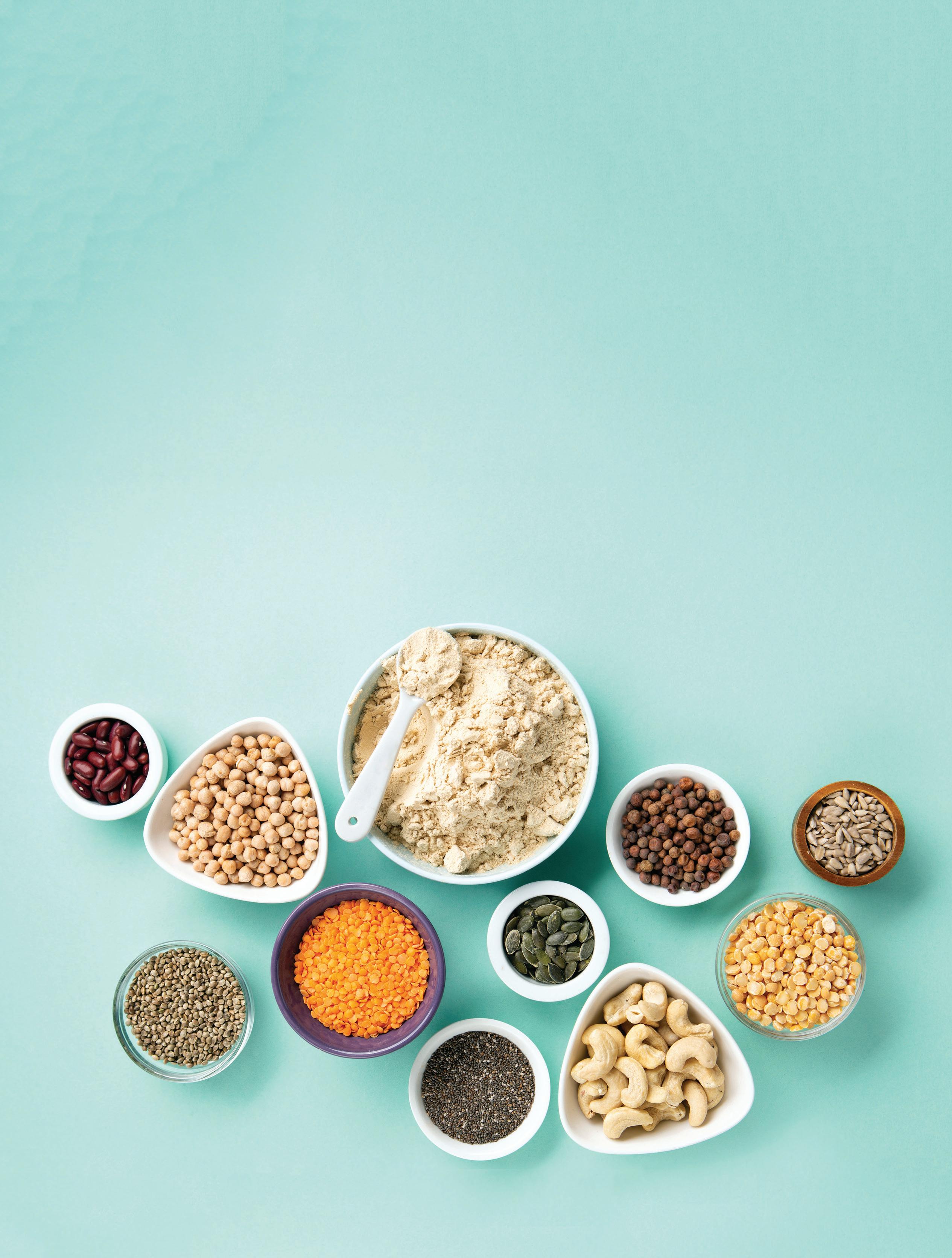
Americans typically don’t consume enough fiber— on average, we consume 15 grams of fiber daily. Men ages 14 to 50 should be aiming to get 38 grams of fiber per day for optimal health. Women ages 19 to 50 need 25 grams. (It’s a little less per day if you’re older.)
Minimal tweaks to your diet can have amazing results. If you add a half cup of black beans to the egg breakfast you usually eat, a half cup of lentils to your daily lunchtime salad, and three tablespoons of hemp seeds to your usual snack of Greek yogurt, you increase your day’s protein intake by 25 grams and your fiber intake by 20 grams.
Another easy way to increase your plant-based protein and fiber intake is by drinking a protein
powder shake with breakfast or after a strengthtraining workout. Protein powders made from pea or hemp protein offer complete protein, which means they contain all nine of the essential amino acids our bodies need to build muscle. Muscles use more calories than fat does, even when you’re at rest. Pea protein is rich in the essential branchedchain amino acids (BCAAs) leucine, isoleucine, and valine. These BCAAs help maintain muscle but tend to become depleted after exercise.
By upping your protein and fiber and adding in a couple rounds of strength training per week, fitting back into your favorite jeans might be easier than you think.
SELECTED SOURCES “Assessing beans as a source of intrinsic fiber on satiety in men and women with metabolic syndrome” by E.J. Reverri et al., Appetite, 11/1/17 • “Black beans, fiber, and antioxidant capacity pilot study: Examination of whole foods vs. functional components on postprandial metabolic, oxidative stress, and inflammation in adults with metabolic syndrome” by E. J. Reverri et al., Nutrients, 8/15 • “Pea proteins oral supplementation promotes muscle thickness gains during resistance training: A double-blind, randomized, placebo-controlled clinical trial . . .” by N. Babault et al., Journal of the International Society of Sports Nutrition, 1/21/15




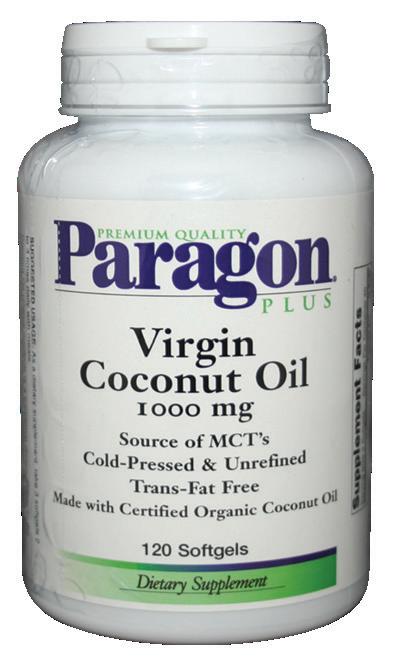
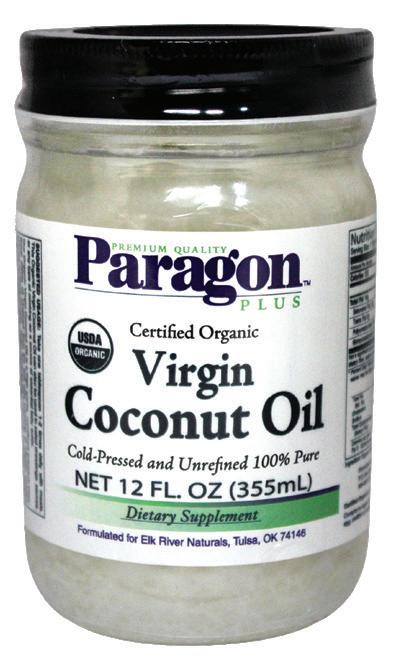
With naturally occurring MCTs, which are less likely to be stored in the body as fat than most other fatty acids.*
MCTs from coconut oil may be used by the body as fuel for energy.*
Coconut oil capsules offer a convenient way to take coconut oil. Coconut oil can be used as an alternative to butter for cooking and baking, and can be used topically as a moisturizer.
Cold-pressed and unrefined.

Nutrient-herb-amino acid complex providing nourishment for various aspects of memory and cognition.*

Ideal for occasional forgetfulness.*
With ginkgo biloba, gotu kola, choline, and more.

Support complex for joint and skin health.*
With hyaluronic acid to help retain skin moisture and joint lubrication.* Plus MSM which may support joint flexibility and skin health.*